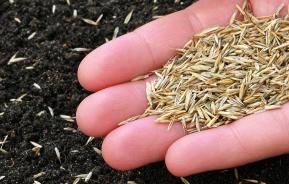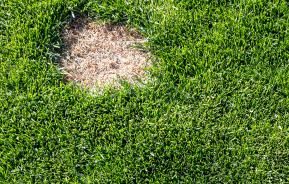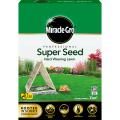This ‘how-to’ guide will tell you how to grow grass from seed to cover those oh-so-annoying bald patches on your hallowed turf. We will also give you a few pointers to give your lawn the care it needs.
Step 1: Picking the right grass seed
Before you start applying the grass seed to those bare patches, make sure you do your research on what grass seed grows best in your garden. In most gardens, a hard-wearing family lawn mixture, containing perennial ryegrass, would be suitable as a ‘general purpose’ lawn solution.
Consider aspects such as; drainage in your garden, whether your lawn is on a slope, how large the bare area/s are, and which areas are shady or susceptible during a period of drought.
Also, consider the main purpose of your lawn and what activities will take place on that space. If you are looking to have an ornamental or fine lawn that does not have high amounts of traffic- then look to purchase mixtures that have a blend of chewing’s fescue, strong and slender creeping red fescue, and brown-top.
If you do have a shady lawn consider acquiring mixtures containing hard fescue, strong and slender creeping red fescue and brown-top, which are all ‘fine-leaved’ species.
Step 2: Soil preparation
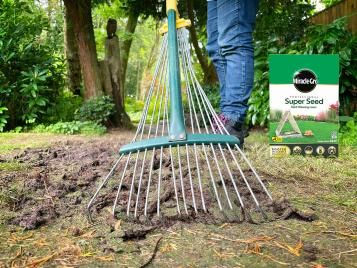
Look to skim off any old grass, removing weeds or any stones and then levelling off the lawn in a rough manner. If you would like any advice on lawn levelling, check our guide on how to level a lawn.
Fork over the site, walk over with weighted heels and then rake over to prepare the area properly.
Make sure that you get out to your lawn 3 days before you apply the seeds, and rake in a granular fertiliser.
Step 3: Sowing the seeds
Shake the box of seeds to help blend the mixture together. Then mark out the areas with string into square metres, if the area in which you want to apply the seeds is large.
Follow the instructions on the packet or alternatively, look to spread around 50 grams of seed per square metre. With that, make sure you weigh and then separate the mixture to get fair, even coverage.
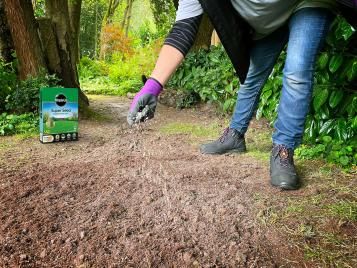
Split every 50 grams in half, and then scatter in alternate directions. Then rake over and water the areas that have been treated.
Make sure that you are sowing the seeds in autumn or mid-spring. Avoid sowing in the summer- your seedlings will not be watered enough to survive! Check out our guide to sowing seeds, to make sure you get it right.
Step 4: Aftercare
If possible, do apply some fruit netting over the treated areas to prevent birds or other nuisance animals from damaging the area. Also applying string around the area, will (hopefully) prevent people from walking over the area.
Keep all of your seedlings well-watered and fed. Look to test your soil every few days to see whether certain areas need attention. Especially around a period of drought, or if it hasn’t rained for around 7-10 days.
Look to weed by hand rather than using any products on the areas you have treated. Do not use weedkillers until after the 4th or 5th cut on the area/s. When the grass has grown, the area will be more durable to weed growth.
Wait until the grass has grown to around 2 inches in height, and then mow down to roughly 1 inch. Make sure you dispose of any clippings on your lawn. Ensure you keep to this rough guideline for the first few cuts, at least. With a little care, you can get a great looking lawn.




